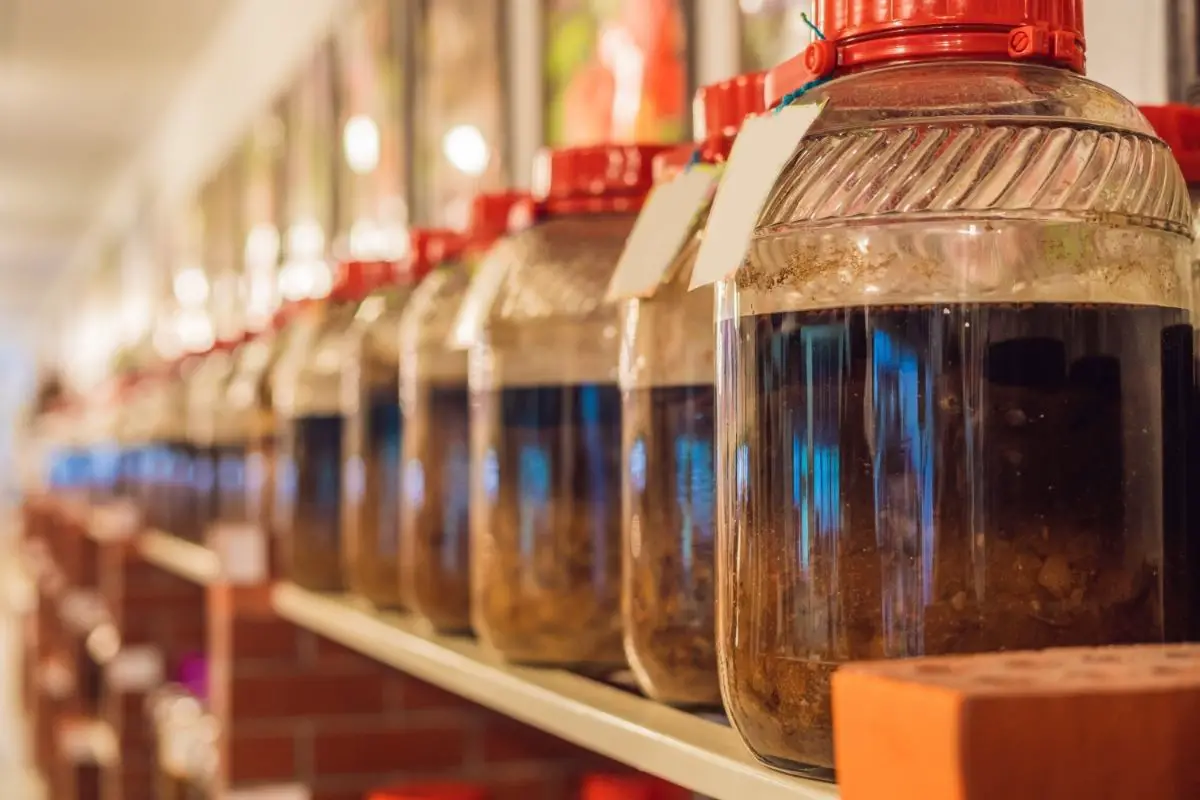There are lots of different steps in the process of making alcohol, and they depend on which type of alcohol you are making.
However, there is one step that all types of alcohol have in common – fermentation.

But what is fermentation? How does it work? And why is it so important? If you want to know more about the purpose of fermentation then keep reading.
We have put together this guide to tell you everything that you need to know.
What Is Fermentation?
Alcoholic fermentation is a biochemical reaction that converts sugar to ethanol using yeast. In simple terms – alcohol is created when the yeast breaks down the sugars of whatever ingredients you are using.
For example, the sugars in grapes are fermented to turn them into wine.
However, there are also byproducts created by the process of fermentation. Carbon dioxide, types of alcohol other than ethanol, and other potentially harmful substances. This is why the process of distillation is important.
The History Of Fermentation
Fermentation is a process that has been used for thousands of years. Some of the first archaeological evidence of fermentation was found in China and dates back to nine thousand years ago.
Different cultures all over the world learned how to ferment various different ingredients depending on what grew in abundance in their local area.
This led to a range of different alcoholic drinks being discovered, from wine to beer. For example, cactus sap was used in Mexico to make Chici, whereas the Japanese use rice to make Sake.
These ancient forms of alcohol were not as strong as the beverages that we consume today. That is because the byproducts of fermentation were very dangerous, and once the alcohol went over 13% the byproducts could become deadly.
This was no longer an issue when the process of distillation was discovered, which removed the unwanted substances from the alcohol so that it could be fermented to a higher proof.
These stronger alcohols, spirits, were used initially for medicinal purposes but then began to be enjoyed as a drink.
They lasted longer than beers and wine, so were suitable for long voyages at sea, making them popular with sailors.
So What Is The Purpose Of Fermentation?

On a biological level, the process of fermentation is used to create Adenosine Triphosphate (ATP). ATP is used to store energy in cells to be used later. This process breaks down sugars and starches to extract the energy.
Alcohol is a byproduct of fermentation, but a desirable byproduct. So for us, the purpose of fermentation is to turn naturally occurring sugars into alcohol so that it can be consumed.
Alcohol can also be used as a disinfectant. Carbon dioxide is also a byproduct of fermentation, and in some drinks it creates bubbles which can enhance the experience of consuming the alcohol – for example, beer and sparkling wine.
How Does Fermentation Work?
The science behind fermentation may sound complicated, but it is actually quite straightforward.
First, let’s consider the yeast. Yeast is a eukaryotic microorganism which metabolizes sugar.
This means that yeast breaks down sugar, and it is able to do this without the presence of oxygen which is why fermentation can occur in a sealed container.
Some types of alcohol require you to make a yeast starter before you add the yeast and begin fermentation.
This means that you activate the yeast in water and let it grow before you add it to the ingredients that you are trying to ferment. In other recipes the yeast is added directly into the ingredients.
Once the yeast is added, a process called glycolysis takes place. This is where the glucose molecules in the sugar are broken down into two smaller molecules.
These two smaller molecules can then be separated into carbon dioxide and ethanol (alcohol). This all happens quite quickly once the yeast is added.
The next stage of fermentation takes longer. This is when the levels of alcohol increase, and the yeast gradually dies off as it runs out of sugar to work on.
You can stop the process of fermentation once the alcohol has reached the desired percentage. The highest percentage of alcohol you can achieve with yeast alone is around 15%.
If you want a higher alcohol percentage than 15%, for example if you are making spirits, then you can achieve this through the process of distillation.
What Is Distillation?
Once the alcohol has been fermented, it can then be distilled. This is when the alcohol is vaporized, cooled and condensed in order to purify it.
This removes unwanted substances from the alcohol, and also increases the percentage.
Alcohol boils at a lower temperature than water, which means it will separate from the water and turn to steam.
The water is discarded and the steam is then cooled to turn it back into liquid. This means that you are left with a stronger alcohol of more premium quality.
Alcohol can be distilled several times to make it even purer and even stronger.
Not all of the alcohol collected from the steam is consumable – the first part is usually very toxic and should be discarded, and the last part will not have a good flavor.
The middle part of the run is the optimum part, with good quality and flavor.
Fermentation can be done easily at home with a few bits of cheap equipment. This is why homemade wines and beers are popular.
Distillation requires expensive, specialist equipment and precise temperatures. It is illegal to distill your own alcohol at home as you need a license.
Summary
Fermentation is an important step in the production of alcohol. It is the biochemical process that turns sugar into alcohol, and it is used to turn fruit into wine and hops into beer.
It is also used to make spirits. Humans have been fermenting different ingredients to make alcohol for thousands of years, but the methods and technology have improved greatly along with the understanding of the process on a molecular level.
- Vevor Still Instructions - June 12, 2023
- Best Proofing Parrots For Home Distilling - February 1, 2023
- What Is A Porter Beer? - June 12, 2022
